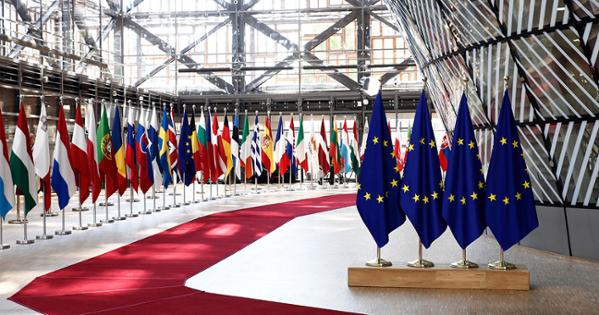Understanding the Future of the Transatlantic Partnership

Since the post-World War II era and the creation of the North Atlantic Treaty Organization (NATO), the transatlantic partnership between the European Union and the United States has experienced turbulent moments. More recently, tensions in the transatlantic partnership have been on the rise as the Trump administration revisits conversations surrounding the future of US security and defense spending in Europe.
In a new briefing paper published in the Finnish Institute of International Affairs, SIS professor Garret Martin and co-author Ville Sinkkonen examine four scenarios surrounding the future of transatlantic relations while acknowledging both new and historic concerns surrounding the United States’ commitment to European security. We asked Professor Martin to answer a few questions about this recent publication to better understand where the future of the transatlantic partnership may be headed.
- In many ways, your new briefing paper lays out an overview of concerns surrounding the future of transatlantic security, underscoring that while the transatlantic relationship has gone through periods of “trust and mistrust since 1945,” it seems we have entered uncharted territory under the second Trump administration. Can you explain why this current moment in the transatlantic relationship is unprecedented?
- The history of the transatlantic alliance between the US and its European partners is littered with moments of tension, mistrust, and crisis. To name a few examples: think France leaving NATO’s integrated military structure in 1966, the Euromissiles in the 1980s, or the build-up to the Iraq war in 2002–2003. One could even say that tension is deeply ingrained in the DNA of the alliance!
- However, what sets apart this current moment from other eras is the nature of the crisis we are observing. Past episodes involved differences over policies and choices, which were sometimes profound, but were not centered on the very existence of the alliance. That is not the case with the Trump era. The current US administration seems deeply skeptical of the need for an alliance and often acts as if its European allies are more of a nuisance than anything else. It has also often lumped together the European Union with other competitors or foes in key policy domains, such as trade and tariffs. And the scorn of the Trump administration is seemingly percolating down increasingly to the Republican Party and its voters.
- The paper lays out four scenarios for the future of US engagement in Europe—neglect, vassal, partner, and bloc logic. Each of these scenarios is defined by varying levels of US investment and control in Europe. Which scenario do you think would be the most beneficial for the transatlantic relationship, and what scenario/approach is the Trump administration currently taking?
- If the goal is to have a more thriving and balanced transatlantic alliance, where there is greater burden and responsibility sharing between the United States and Europe, then the ‘partner’ scenario would be preferable. This path—where the US would remain committed to Europe but not try to dictate its political choices—could be compatible with both the dwindling appetite in the US to pay such a high cost for the security of allies and Europe’s ambitions to be more autonomous. Moreover, it would create a more tranquil context in which to facilitate a “managed transition,” since it would take years, for instance, for Europe to take on a greater role in overseeing its defense and develop the necessary capabilities.
- However, the indications so far suggest that the Trump administration’s approach toward Europe is more in line with the ‘vassal’ model than it is with the ‘partner’ path. Trump and his senior officials have certainly blown hot and cold toward their allies since January 2025, but the overall picture has not been reassuring. The imposition of hefty tariffs on the European Union, the ambivalent support for Ukraine, and the likely withdrawal of some US troops stationed in Europe suggest a trend of American disengagement. At the same time, the Trump administration has not been shy in trying to dictate or pressure European allies in some key policy domains, such as freedom of speech, regulation of tech companies, or demanding that the EU impose tariffs on China.
- The paper describes the four scenarios as possibilities for US engagement in Europe in the coming five to 10 years. President Trump’s administration will come to an end in 2029, but what long-term impact do you think his administration’s approach to foreign policy will have on the transatlantic relationship?
- It is notoriously difficult to make predictions, and our crystal ball is likely to be more fuzzy than clear! However, we can reasonably speculate that Trump’s impact on the transatlantic relationship will outlive his time in office. For instance, the polarization that exists across the board in American politics will likely extend for the foreseeable future to NATO, the EU, and Europe at large. We can reasonably expect that Republican voters in the US will tend to be more skeptical of transatlantic allies, considering the way Trump has been critical of partners in Europe since 2015. On the other side of the equation, European partners can no longer believe that the Trump presidency is an outlier and that transatlantic relations could easily return to the status quo ante 2016. Whether the transatlantic alliance can survive post-2029 remains unclear, but it cannot do so unless it fundamentally reinvents itself.